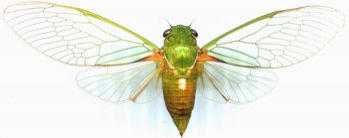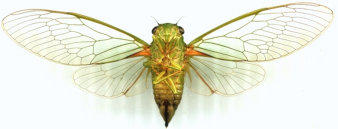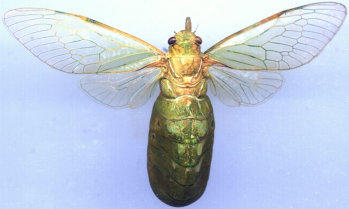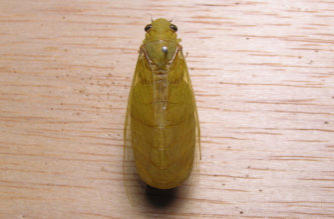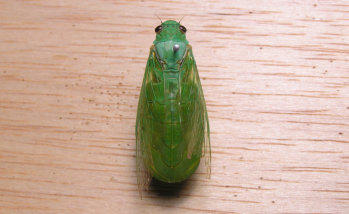Bottle Cicada (species complex)
Glaucopsaltria viridis Goding and Froggatt, 1904
© Popple Creative Industries 2014–2024
Species number (TNS):
580, 581.
Fore wing length:
27–34 mm.
Distribution and seasonality:
From near Gin Gin in south-
east Queensland south to
Dorrigo in New South Wales,
with an isolated population
around Mackay, Cape
Hillsborough, Eungella and
Carlisle Island in central
Queensland. Adults occur from
September until June.
Notable localities:
Cooroy, Brisbane.
Habitat:
Rainforest, riparian forest,
open forest with rainforest
elements in the understorey,
lush parklands and leafy
gardens.
Species complex includes:
Large Bottle Cicada (TNS:
580): From near Gin Gin south
to Dorrigo.
Cape Hillsborough Bottle
Cicada (TNS: 581): Found
around Mackay, Cape
Hillsborough, Eungella and
Carlisle Island.
Calling song and behaviour:
A continuous whistle with mild
fluctuations like the sound of a
boiling kettle. Singing occurs
for up to half an hour at dusk
and also occasionally during
thunderstorms and in response
to the noises produced by
aircraft or large trucks (Large
Bottle Cicada); or in short
bursts during the day (Cape
Hillsborough Bottle Cicada).
During the day and night Large
Bottle Cicada males
sporadically produce a short
call consisting of 2–8 chirp-like
clicks. This becomes more
frequent in the late afternoon
until the dusk chorus begins.
Adults occur in the shade
under the cover of leafy
foliage.
Colour variation:
Specimens fade from green to
yellow-brown after death.
Natural bright yellow and
potentially bright blue males
can also be found.
Similar species:
Lesser Bottle Cicada,
Reticulate Bottle Cicada.
Habitat

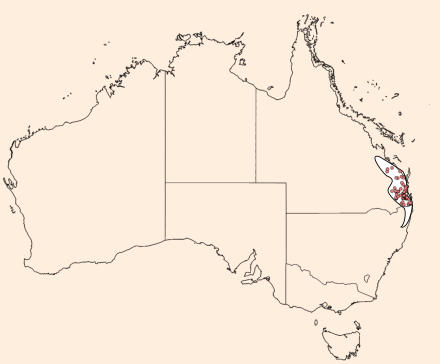
Male

Currently known extent
dr-pop.net database record:
Large Bottle Cicada

Female
